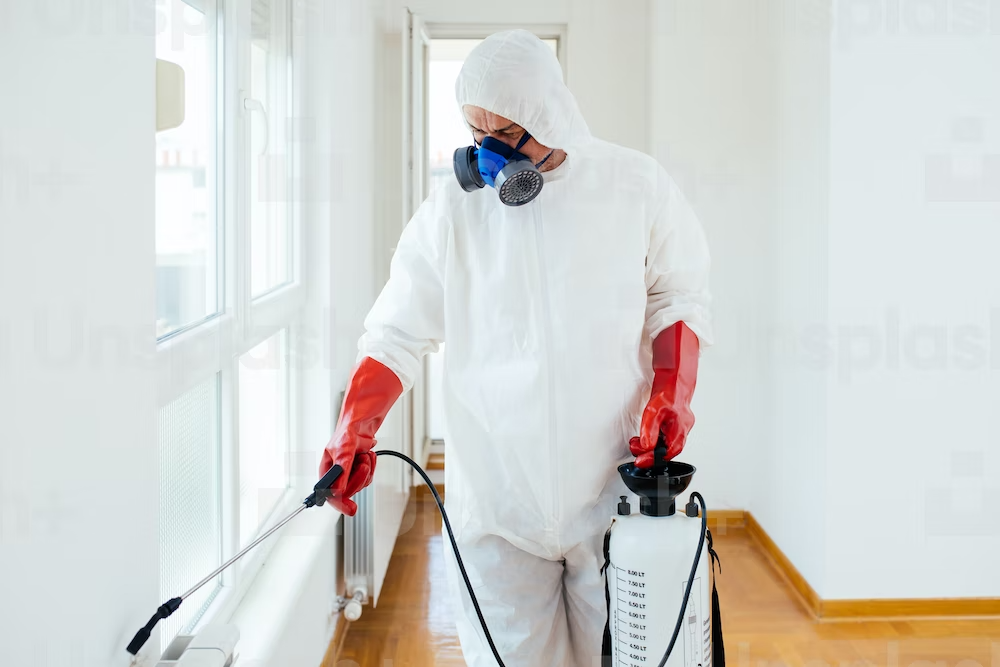Have you noticed any wood damage in your home? Or do you have any concerns that your home may be at risk for termite damage? With the swarms of these pests around this time of year, it’s important to be vigilant to protect your home.
This guide will walk you through everything you need about termite inspections, including when they should be conducted, what to expect during an inspection, and how to find a qualified inspector. We’ll also go through the signs of termite damage so that you can keep an eye out for any potential problems. Let’s get started.
How Do You Know If You Have Termites?
Every year, around 600,000 homes in the United States are damaged by termites. Termites cause more damage to homes than fires, floods, and tornadoes combined. Yet, most people are unaware of the threat termites pose to their homes. A few main signs indicate you may have a termite problem:
1. Stuck Windows Or Doors
If doors or windows in your home are difficult to open or close, it may be a sign that termites have eaten away at the wooden frame. Termites prefer soft wood, so they often use window and door frames first.
Also, the wood is exposed to the elements and insects outside. You may also see other structural problems in your home, such as crumbling baseboards or sagging floors and ceilings. Many things could cause these problems, so look closely for termite damage when inspecting your home.
2. Damage Under Paint Or Wallpaper
One of the telltale signs of termites is damage under paint or wallpaper. If you see any cracks, holes, or blisters in your paint or wallpaper, it’s a good idea to check for termite damage. Termites create tunnels as they travel, and these tunnels can cause paint or wallpaper to blister or crack.
Sometimes, there may be no visible signs of termite damage on the surface of paint or wallpaper. However, looking closely, you may see signs of termite damage underneath. If there is unusual damage on painted or wallpapered surfaces, it is important to investigate further and look for other related signs of termite infestation.
- Small Pinholes: If you see small, round holes in painted or wallpapered surfaces, this is a sign that termites have eaten through the surface and are present.
- Bubbling Paint: If paint appears to be bubbling or blistering, this is another sign that termites are present and have caused damage.
- Peeling or Discolored Wallpaper: With termite damage, wallpaper may peel away from surfaces or appear discolored.
- Buckling Wood: If the wood appears to be buckling or warping, this is a sign of termite damage.
- Dented or Sunken Areas: With termite damage, you may also notice dents or sunken areas in wood or other surfaces.
- Narrow, Sunken Winding Lines: This is a sign of termite damage if you see narrow, winding lines sunken into surfaces. Termites create these lines as they travel along surfaces.
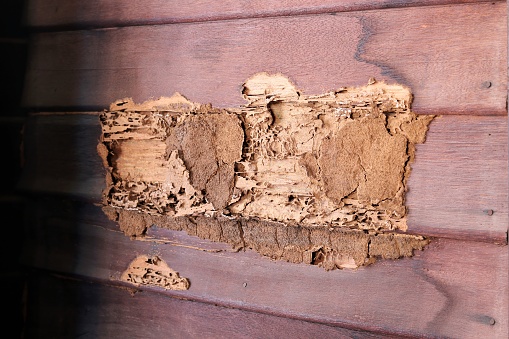
3. Termite Swarmers And Discarded Wings
Termite swarmers, also known as alates, are the reproductive members of a termite colony and can be identified by their two pairs of wings that are pale-colored and approximately 1/4 to 1/2 inches long. After a swarmer leaves the colony to find a mate, they shed their wings.
In early spring, termite swarmers may fly around looking for mates to start new colonies. They are attracted to light and often end up near doors and windows. You may find dead swarmers or their wings near entryways, as they don’t live long indoors. People sometimes mistake them for flying ants, but you can tell the difference by their straighter bodies and two pairs of wings that are the same size. Ants have a pinched waist and two pairs of different-sized wings.
4. Mud Tubes
The presence of mud tubes is another strong indication of a termite infestation. Mud tubes are thin veins of mud that run along the sides of buildings and other structures. These tubes originate from the ground and typically lead to areas with exposed wood, as termites use them to travel safely from their colonies to their food sources. Subterranean termites have thin exoskeletons and are susceptible to drying out quickly, so they need a humid environment to survive. Mud tubes provide the moisture they need while allowing them to travel undetected.
By checking for mud tubes, you can confirm if there is an active termite infestation. If you find a mud tube, break off a small piece and check for live termites. Even if you don’t see any termites, check back later to see if the tube has been repaired.
If the tube is not repaired and you don’t see any signs of live termites, this does not mean that your property is termite-free. The termites may have moved to another area where there is better access to their food source.
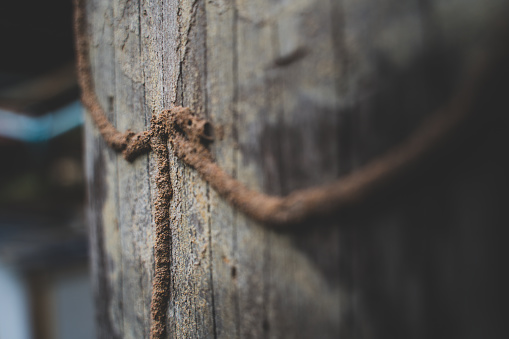
5. Termite Droppings
Another sign of termite activity is the presence of their droppings, which are also known as “frass.” As termites consume wood, they digest it and then push the resulting waste out of the colony to avoid buildup.
In most cases, only the frass from drywood termites is visible to humans. The frass from these termites is wood-colored and pellet-shaped, often appearing like wood dust or shavings. Drywood termites are found primarily in southern coastal states.
Comparing this to subterranean termites, their droppings are used to build mud tunnels. If you live in New York City or the northeast, it’s unlikely that you will encounter any drywood termite frass.
When Should You Opt For A Professional Termite Inspection?
If you have any reason to believe that your home or property may be infested with termites, it’s best to contact a professional for a thorough inspection. A trained exterminator can identify the signs of an infestation and determine the best course of action. With over $5 billion in damage done to homes and property each year, termites are nothing to mess around with.
While you may be able to identify some signs of termite activity on your own, a professional can provide a more thorough inspection. They will also be able to help you find the source of the potential termite infestation and determine the best course of action.
A professional inspection is always a good idea when buying or selling a home. This will give you peace of mind knowing that the property is free of pests or infestations.

Termite Inspections Process
A professional termite inspection will involve a thorough examination of your property – both the interior and exterior. You need to:
1. Set Up Time With A Qualified Termite Inspector
Finding qualified termite inspectors is the process’s first and most important step. You want to find someone with experience and who is licensed and insured. Look for reviews online and ask for referrals from friends or family. Once you’ve found a few qualified inspectors, reach out to them and set up a time for the inspection.
2. Prepare Your Home For The Inspection
Once you set a date and time, you must prepare your home for inspection. This involves moving any furniture or debris in the way and ensuring the inspector has clear access to all areas of your home. Also, be sure to ask the inspector if there are any specific preparation requirements for your home.
3. The Inspection Process
The inspection process itself is relatively straightforward. The inspector will start by examining the exterior of your home, looking for any signs of termite damage or infestation. This will include checking around the foundation, under porches and decks, and in other areas where termites might be present.
Once the exterior inspection is complete, the inspector will move inside. Again, they will look for any signs of termite damage or infestation. This includes checking walls, floors, ceilings, and other areas where termites might be present. The inspector will also look for any signs of moisture, as this can indicate a termite problem.
The wooden structures in your home will be the main focus of the inspection, but the inspector will also check any other areas where termites might be present. This includes checking for signs of termite damage in your furniture, clothes, books, and any other items in your home.
4. After The Inspection
Once the inspection is complete, the inspector will provide you with a report detailing their findings. This report will include any areas of concern and what, if any, treatment options are available. If the inspector finds no signs of termite activity, they will give you a clean bill of health. However, if they find evidence of termites, they will recommend a course of treatment for termite control. Also, be sure to ask the inspector about any steps you can take to prevent termites in the future.
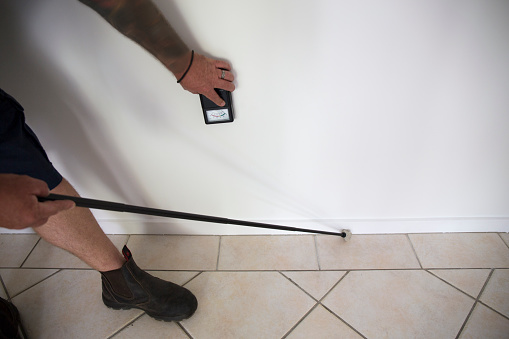
5. Schedule A Follow Up Inspection
Even if the initial inspection comes back clean, it’s a good idea to schedule an annual follow-up inspection. Termites can be difficult to detect, so it’s important to have your home inspected regularly. A follow-up inspection will also allow the inspector to check for new termite activity signs.
Scheduling a termite inspection protects your home from these destructive pests. By following the steps outlined above, you can ensure that the inspection process is as smooth and effective as possible. You can look for the signs mentioned above for free termite inspections, but finding a reliable pest control company is always the best bet.
What About Crawl Space Termite Inspection?
Most people think about their homes as the only place that termites would attack. However, these pests can also enter your crawl spaces and cause extensive damage. A crawl space is ideal for termites because it provides them with the moisture and darkness they need to survive.
While scheduling inspections for the rest of your home, don’t forget to add a crawl space inspection to your list. It’ll ensure that your home is completely protected from these destructive pests. These pests can cause structural damage to your home if they’re left unchecked.
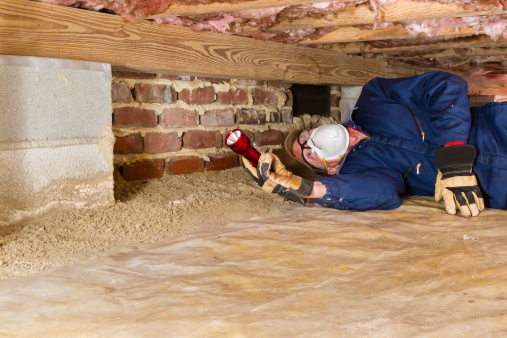
How To Prevent Your Home From Termite Infestation?
Prevention is always better than cure. You can do some things to keep your home safe from termites.
- Prevent Moisture: Termites are attracted to moisture. You can prevent them by fixing leaks in your home and keeping the gutters clean. You should also ventilate damp areas like the basement and crawlspace.
- Get Rid of Woodpiles: If you have a woodpile in your yard, ensure it is at least 20 feet away from your house.
- Repair Roof And Attic Issues: To prevent termites, keeping your roof and attic in good condition is important. If there are any cracks or holes, get them repaired immediately.
- Seal Entry Points: Make sure there are no cracks or gaps around doors and windows. You can use caulk or weather stripping to seal these openings.
- Keep an Eye Out: Be on the lookout for any signs of termites on your property, such as mud tubes or swarmers. Call a professional pest control company immediately if you see anything suspicious.
- Regular Inspections: Have your home inspected for termites at least once a year by a qualified exterminator. This will help you catch an infestation early and prevent serious damage to your home.
Conclusion
Regular termite inspections are vital to protecting your home from these wood-destroying pests. Having a professional inspect your home regularly can catch an infestation early and prevent significant damage to your property. Also, keep an eye out for signs of termites, and contact a pest control professional if you suspect an infestation.
We hope this guide was helpful and if you have any further questions, feel free to comment below.

